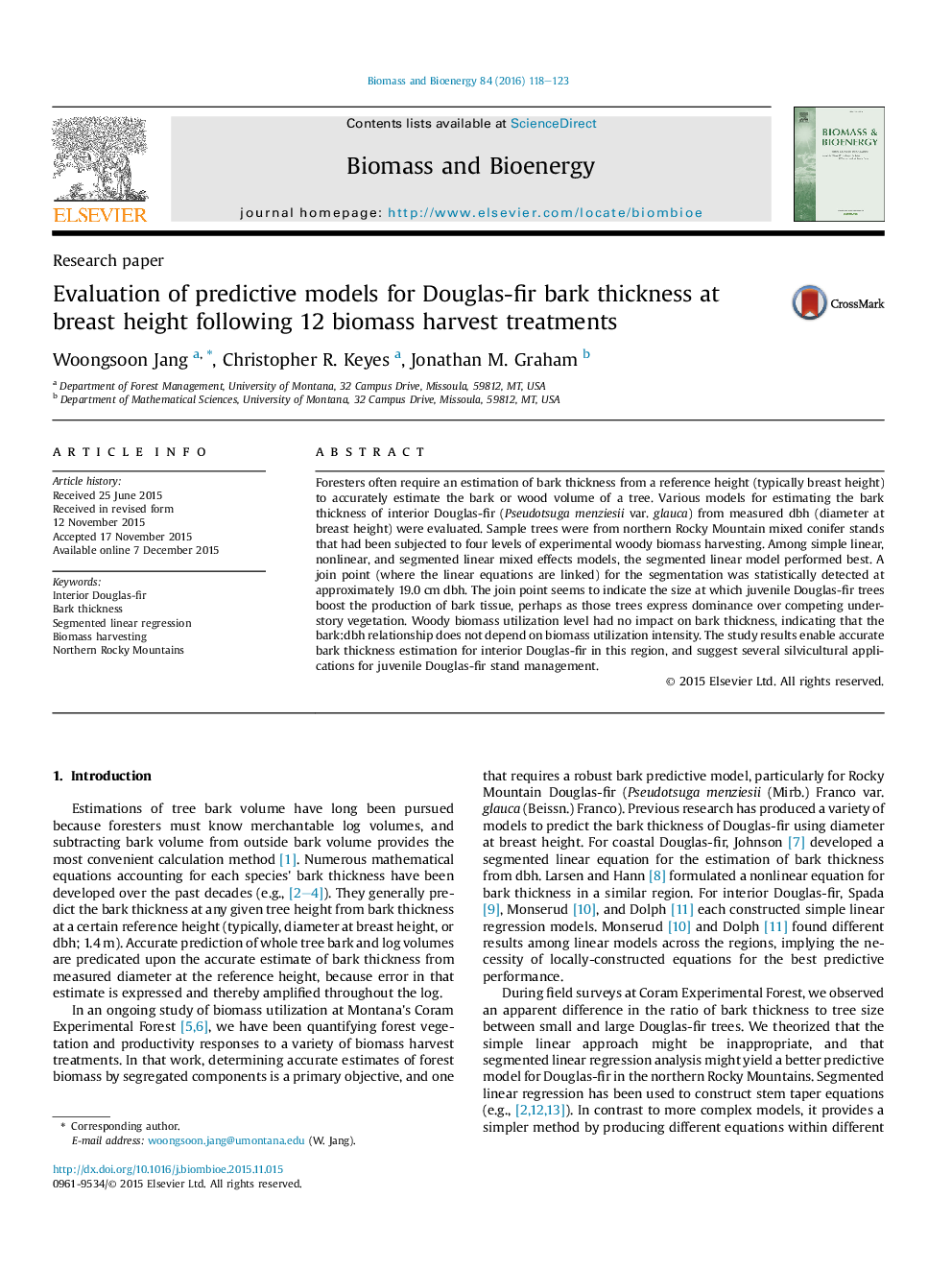| Article ID | Journal | Published Year | Pages | File Type |
|---|---|---|---|---|
| 676727 | Biomass and Bioenergy | 2016 | 6 Pages |
•Bark thickness of interior Douglas-fir trees was modeled in three ways.•Simple linear, nonlinear, segmented linear mixed effects models were compared.•The segmented linear mixed effects model performed best.•The biomass utilization level did not affect the bark:dbh relationship of Douglas-fir.
Foresters often require an estimation of bark thickness from a reference height (typically breast height) to accurately estimate the bark or wood volume of a tree. Various models for estimating the bark thickness of interior Douglas-fir (Pseudotsuga menziesii var. glauca) from measured dbh (diameter at breast height) were evaluated. Sample trees were from northern Rocky Mountain mixed conifer stands that had been subjected to four levels of experimental woody biomass harvesting. Among simple linear, nonlinear, and segmented linear mixed effects models, the segmented linear model performed best. A join point (where the linear equations are linked) for the segmentation was statistically detected at approximately 19.0 cm dbh. The join point seems to indicate the size at which juvenile Douglas-fir trees boost the production of bark tissue, perhaps as those trees express dominance over competing understory vegetation. Woody biomass utilization level had no impact on bark thickness, indicating that the bark:dbh relationship does not depend on biomass utilization intensity. The study results enable accurate bark thickness estimation for interior Douglas-fir in this region, and suggest several silvicultural applications for juvenile Douglas-fir stand management.
